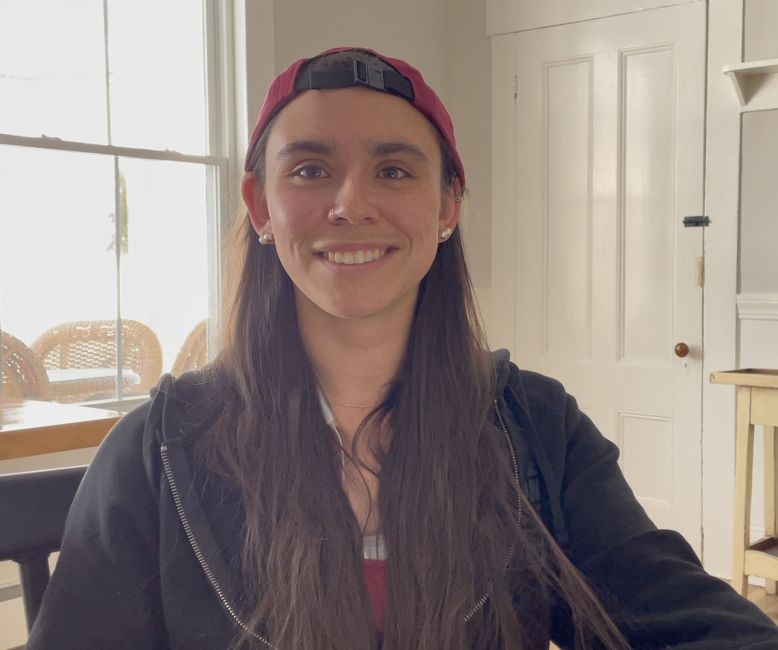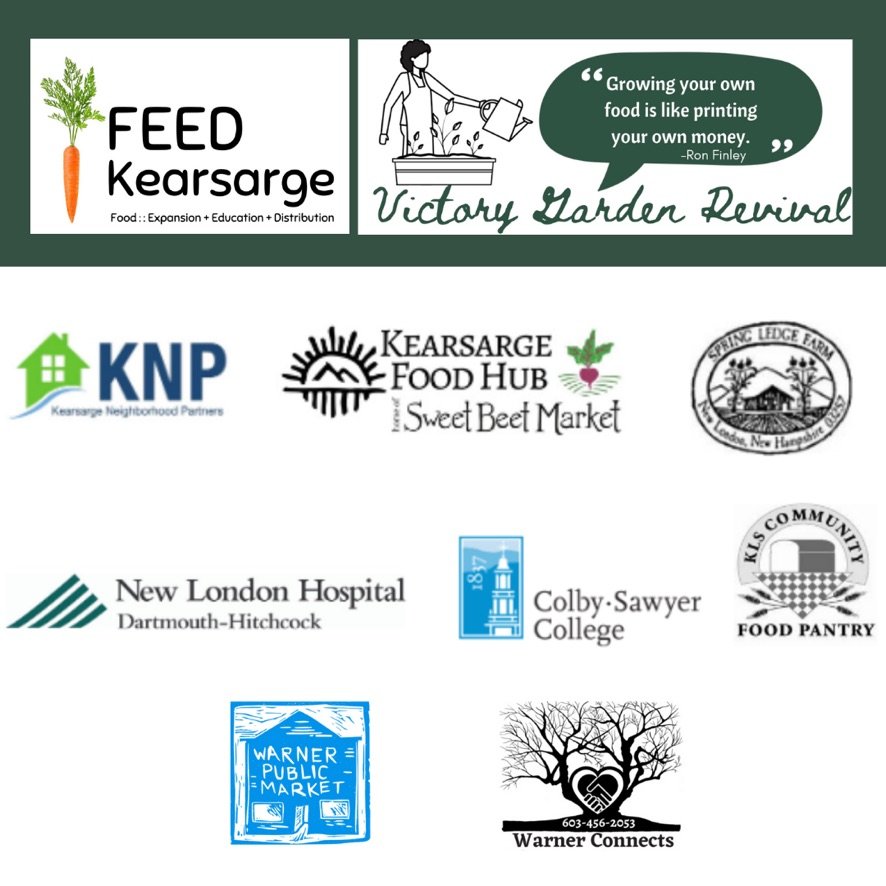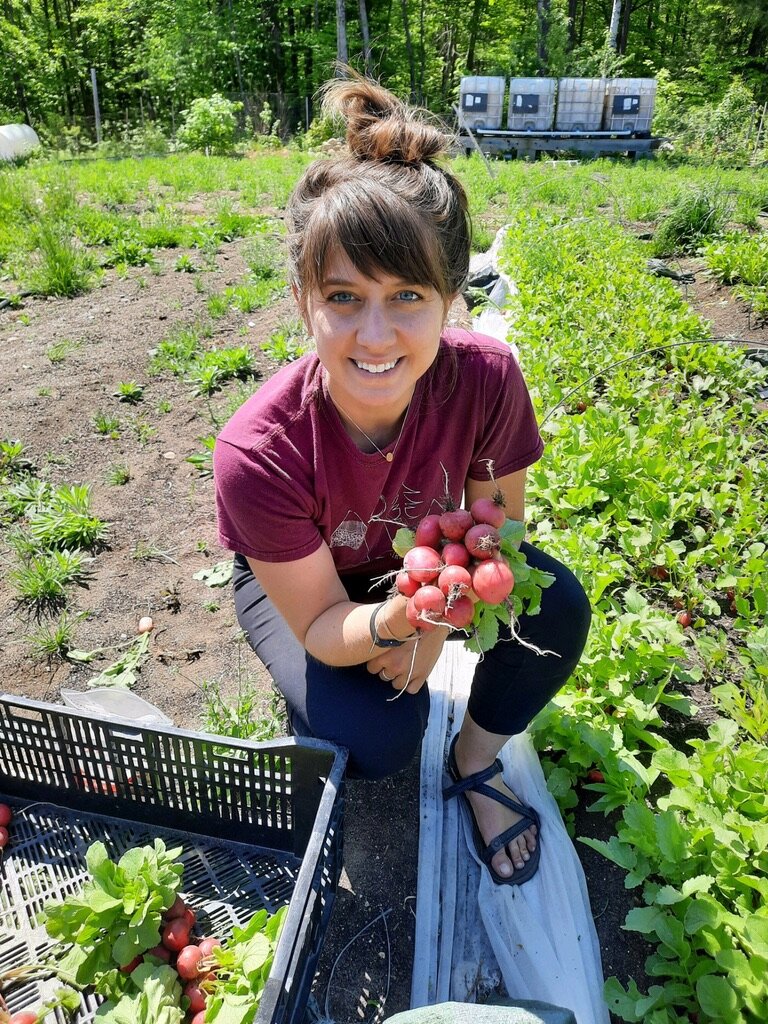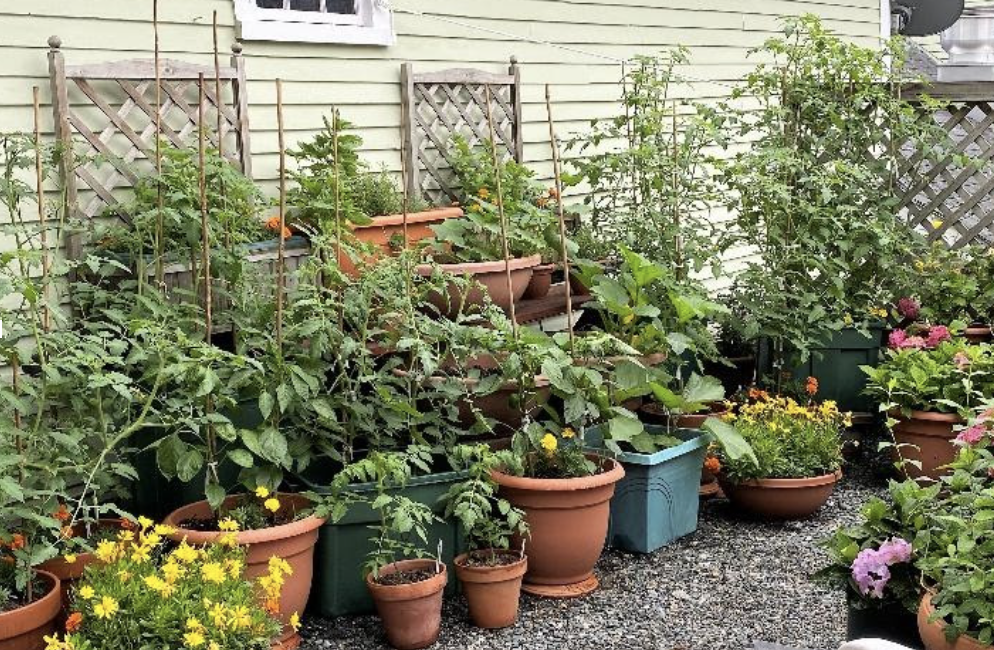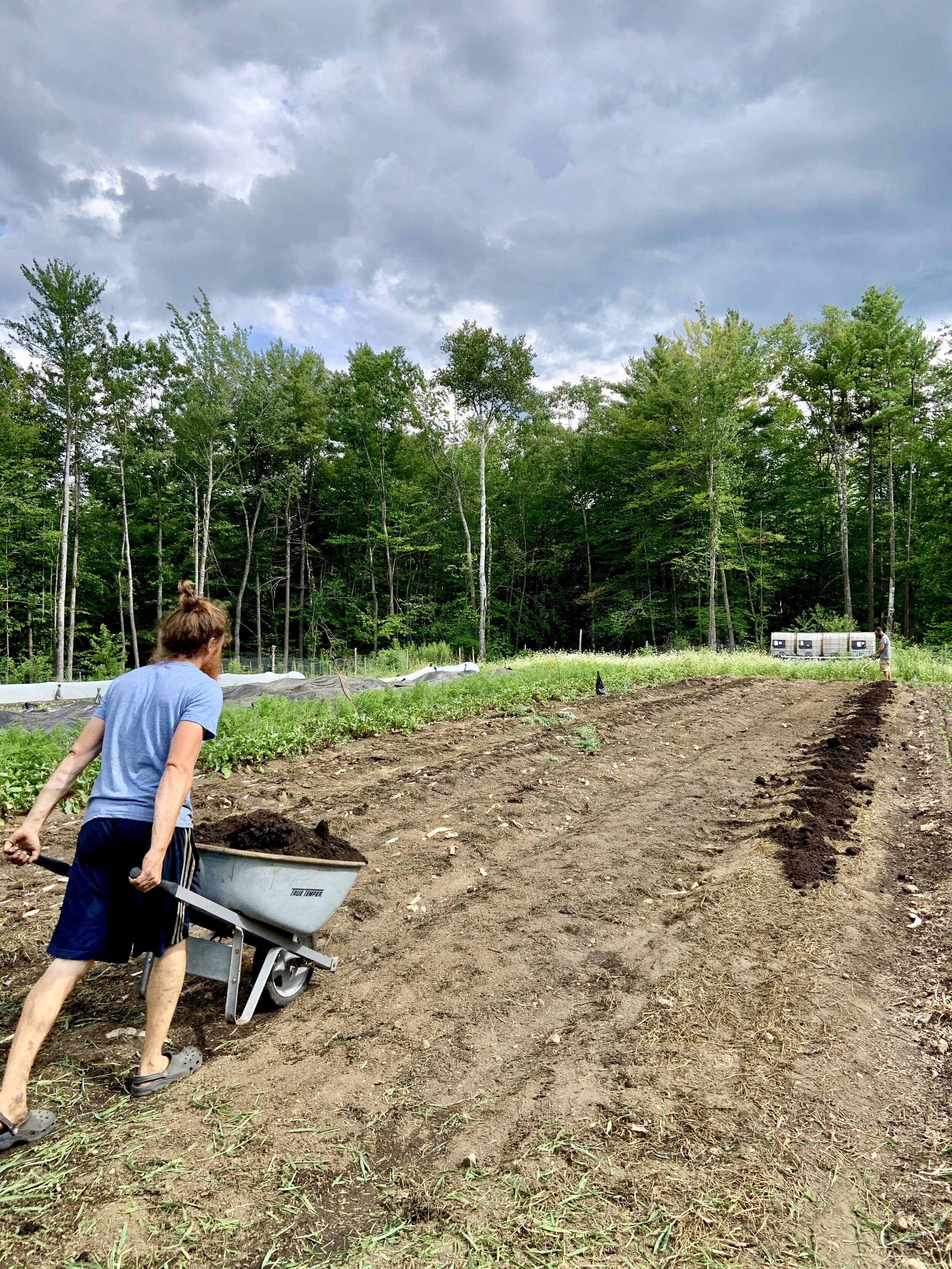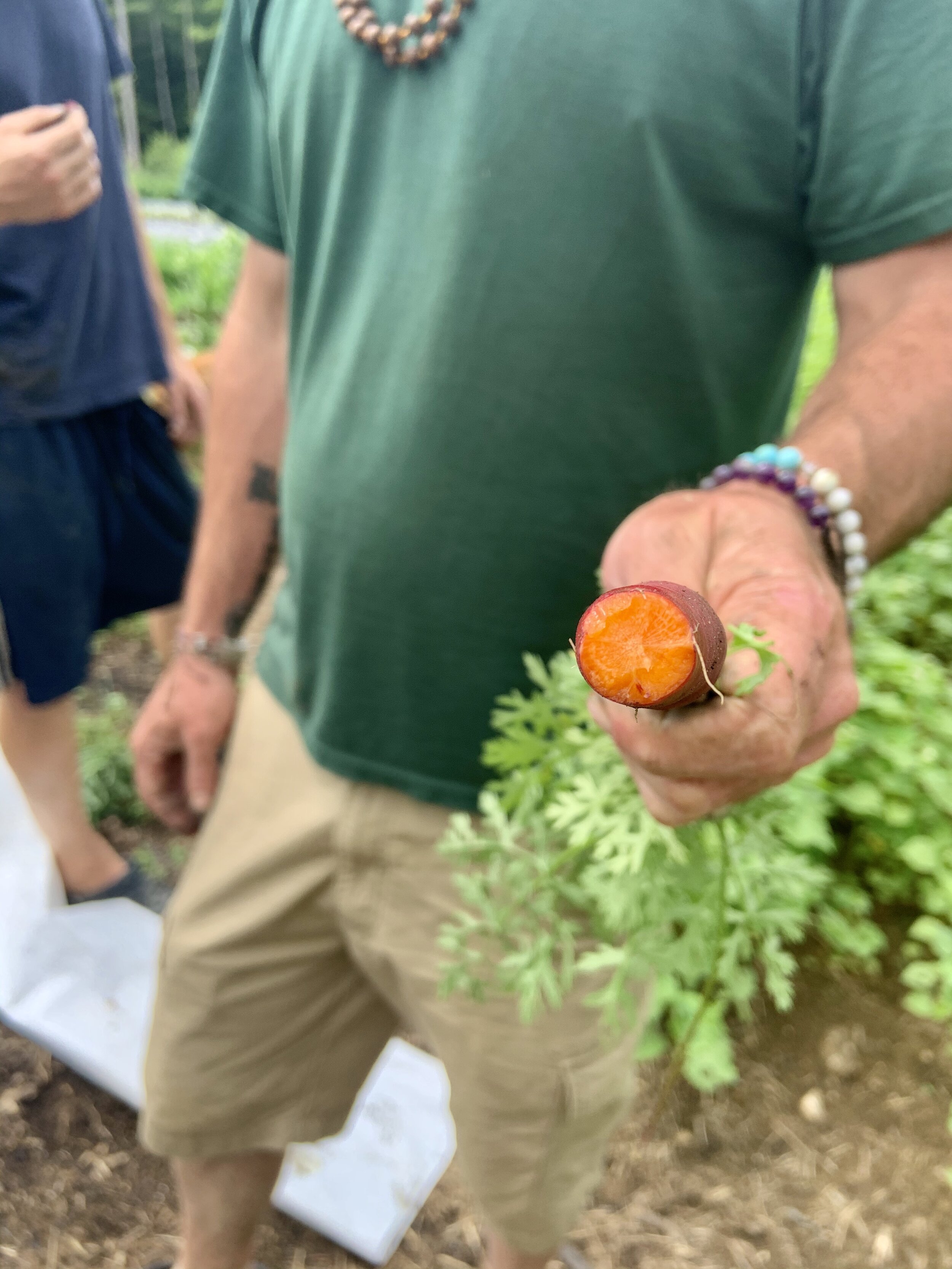Time for a Staff Spotlight! Cameron Huftalen is market team lead in Sweet Beet Market. They've taken tremendous initiative and leadership in shaping the heart and direction of the market since June of 2020. We sat down with Cam to learn more about them and their role and passions related to the nonprofit work we do here at the Kearsarge Food Hub. Cam provides vision and leadership in key areas like equity and food sovereignty, areas where we put into practice one of our core values: learning as we grow! And we do indeed have a lot of learning and growing to do. Thank you for taking the time to share your perspective, Cam!
Please enjoy this interview and short video series with Cameron Huftalen.
Q: Tell us a little about you and your background! Where’d you grow up, what are your hobbies, what did you study in college?
A: So I grew up in Henniker, just about fifteen minutes away from Sweet Beet. My mom’s entire family is from there and used to have a dairy farm, my uncle still has an orchard, pumpkin patch, and Intervale Farm Pancake House. My dad is from Rhode Island but has been in New Hampshire for a while now. I grew up doing a LOT of sports, but like the worst sports for a parent to have to deal with (downhill ski racing, horseback riding, etc). I was a goalie in just about every team sport I played, which led to a lot of nice bruising but I hear that’s good for character building. I went to college at Bates College in Lewiston, Maine where I got degrees in History and European Studies, with an additional concentration in Archaeology and Material Culture.
Q: What is your role at the Kearsarge Food Hub and when did you join the team?
Cameron describes their role and day to day work as market team lead.
A: I am currently one of our leads in Sweet Beet Market! I joined KFH in the beginning of June 2020, originally planning to do a short seasonal shift of work and then ended up sticking around way beyond that. Right now I coordinate a lot of Sweet Beet Market’s operations.
Q: What is most interesting to you about your job here?
A: I think that just getting to know the local food system has been really interesting. It’s not something that I thought a lot about prior to working with this organization. I knew, obviously, that there were farmers around (I mean like I said, my family used to farm) but I don’t think I ever spent a lot of time thinking about the scope of that and the interconnectedness of the whole system, so getting to be involved with and learn about that has been really cool.
Q: What is most challenging about your job?
Cameron talks about the challenges of developing equity in our local food system.
A: The current paradigm we live in, on a national scale, makes some of the work we do challenging (that feels like an understatement haha). The systems in place are inequitable on a large scale, and that trickles down into the smaller functions we see in our own community. One of our key values here is paying our farmers and makers what they feel is fair compensation for their products. That’s how we’re able to support smaller scale operations with practices and values that align with ours. The flip side of that, however, is that when we then sell those items, there’s an issue of inaccessibility that we have to grapple with.
Historically we’ve talked a lot about the “hidden costs” of cheaper, more mass produced products (i.e. human rights violations, environmental damage, etc)– but that doesn’t negate the very real fact that for a lot of people, they are cheaper in comparison to what we have the ability to offer right now and it’s imperative that we acknowledge that. The challenge that we’ve been working through is how do we support the people and practices that we want to in order to combat the larger overarching destructive and inequitable systems, while also recognizing those systems make it very hard for many folks to engage with our market and products over the more accessible larger scale outlets and items, even if they want to purchase local goods.
I think it’s really important to acknowledge that it’s an area for growth within our market, but at the moment a struggle that is still felt by folks in our community that we want to connect with and for whom we want to be available.
Q: What issue or issues are you most interested in that relate to the KFH mission?
A: Throughout college, because I was working with a lot of history and archaeology, I got to learn about a lot of important structural inequities and how they’ve developed over time. Concepts like race, class, gender, religion, age, sexual orientation, and many more were lenses that I worked with often in terms of historical and contemporary analysis. The work that I did with archaeology, for example, focused specifically on a very important methodology that was specifically decolonizing – Indigenous Archaeology.
This is a methodology that seeks to decolonize the field of archaeology by acknowledging the harm and inherent colonialism within the discipline, and working to combat that harm by prioritizing communities’ desires and knowledge. It seeks to return power to communities that have suffered due to decisions made through archaeology (i.e. legislative decisions such as land rights) and the inherent trauma of having someone outside of your culture explain your stories without any input or consent from you. Key tenets of Indigenous Archeology include creating relationships with communities based upon healthy and clear communication, respect, and the prioritization of what these communities and people want with regards to archeological study and dissemination of findings.
Archaeology is the study of material culture, but through that, it’s an attempt to tell stories about people and their lives – their daily practices, what they ate, what sorts of things were important to them, what families and relationships were like, all sorts of pieces that come together to paint a picture of a person or community’s life. It brings up a critical question of who should be telling these stories and how/if that information should be disseminated. There’s a very real trend within archaeology of people coming into communities, excavating, gaining recognition in academia for their findings, and then not sharing any of that knowledge or any benefits that come from it with the community they were studying. This methodology works to replace that harmful trend by placing the interests of the community first.
Cameron describes food sovereignty and what it means to them that KFH strives to grow in this area.
Decolonization within activism is very important to me, and I think that it’s something that KFH is really working toward – where I see a big connection between my interests and the organization’s work, is with the steps toward supporting food sovereignty.
Food sovereignty, like Indigenous archaeology, is about recognizing systems that have been used to marginalize particular groups of people, and working to address and dismantle them while also cultivating community and cultural revitalization. Food sovereignty is not the same thing as food security, and I think that KFH’s transition from focusing on addressing food insecurity in the community to supporting food sovereignty is really cool and gives me a lot of hope and inspiration for the work going forward.
What I want our organization to be able to do is not just donate food to people, but to go beyond that and to recognize our positionality as a majority white and privileged group of people in our non-profit, and to utilize the power that comes with those identities to support programs like seed sharing, community gardens, and LandBack initiatives that seek to empower people and help to preserve and sustain cultures by restoring resources and power that have been systemically withheld from many communities. As an organization, we’re working on better understanding our positionality in the local food system and striving to provide the communities we work with the support that they want, rather than what we think they need.
These are issue that truly deserve many more words, but given the fact that this is meant to be a staff spotlight and not a TED talk I think I’m going to cap it here. However, PLEASE if you’re interested or want to talk, reach out to me (I’m usually in the market!) because this is something I’m really invested in/want to create more discussion around and would love to get into many more of the complex details.
Q: What’s the best thing about Sweet Beet / KFH customers and supporters?
A: Something that I have really enjoyed has been the community with a lot of the folks that are coming in and engaging with us. There’s a sense of connection with a lot of people, and a shared sense of values that has been really great to witness and to take part in.
Q: What’s something you’ve learned about the local food system since you’ve started your work with KFH?
Cameron talks about learning about the community connections behind the food.
A: I touched briefly on it before but just the fact that there is such a local food system has been something really cool to learn about. I knew from fleeting visits to farmers markets or social media that there were local farms, but getting to know the people who are growing and raising and making in the surrounding area on both a business and personal level has been really wonderful. I now know a ton more about local meat agriculture – which is something I never really even gave two seconds of thought to prior to working with KFH.
Q: What direction or area would you like to see the Kearsarge Food Hub grow into or improve in?
A: Again, I’m looping back to previous answers but I think that finding creative ways to address our inaccessibility would be something I’d like to see us grow within. I think that when we talk about things like our values and what practices of growing that we want to support it’s all well and good, but to someone with an income that can’t partake in purchasing those goods it does nothing.
Cam describes how Sweet Beet Market factors into the larger Kearsarge Food Hub nonprofit.
What we don’t want to do is shut the door on members of our community, and I think that in recent months we’ve really ramped up discussions about that internally and we’re hoping to get more programs and systems in place to be able to address those issues while also still supporting the small scale local folks that are making these products for us. It’s a really complicated issue and somewhat of a balancing act but I’m excited to see how we can figure out some solutions going forward. In addition to that, looping back to food sovereignty, I’d really like to see us do more in that vein, particularly to create and strengthen more partnerships with communities in the area that are doing that important work, and leveraging the position that we have to assist with those goals.
Q: What are you eating these days?
A: A LOT of curries right now!! And I say curries, but what I mean by that is dumping a lot of tofu, chickpeas, lentils, potatoes, etc into a pan along with tomatoes, lots of spices, and sometimes some coconut milk, and pouring it all over a big pile of rice. The common denominator with all the different variations I’ve been making is that my mother cannot eat them because they are too spicy (I am incredibly heavy handed with the cayenne jar, I know this about myself, and honestly, I’m ok with it).
Q: What are you reading right now?
A: I am reading a ton of books right now because I’m trying to coach myself back into reading. Once I got out of college I sort of fell out of it and even then I was reading a lot of academic texts (which I still am). Currently I have a few goings including Under the Whispering Door by TJ Klune, Kings of the Wyld by Nicholas Eames, This is How You Lose the Time War by Amal El-Mohtar and Max Gladstone, I Slept with Joey Ramone by Mickey Leigh, and Please Kill Me by Gillian McCain and Legs McNeil. So I’ve got a pretty good spread going but I’m always down for more recommendations or to talk about books!
Q: What’s your favorite product in Sweet Beet Market?
A: Ginger Brew has been a favorite of mine since I started here, and recently (I say recently but this came in last summer) the hot momo sauce.
Q: What’s your favorite product in Sweet Beet Café?
A: Breakfast sandwiches are my go-to because a breakfast sandwich can really never be bad but I gotta say the Sweet Beet Cafe breakfast sandwiches are out of this world good. As far as drinks go I love an iced latte (either a mocha or a ginger, usually), and I LOVE the Capetown Sunset tea from White Heron.
Q: If you could get one message out to the masses, what would it be?
A: “Be Good to Yourself” which I’ve stolen from Ed Larson from the Brighter Side Podcast but really… that’s what I’d say, I think. I think we need a little more of that in all of our lives. It’s really easy to get stuck in a rut of worrying about what we’re doing or not doing, but underneath all of that you’ve got to be good to yourself because if you’re not then it doesn’t really matter how much you’re doing because it probably won’t be effective. You’ve got to take care of yourself to be able to also take care of other people and projects. I might also be biased because I’ve fallen off taking care of myself recently and, guess what, I’m really feeling it! So I’m trying to incorporate a few more things into my day that I know help me to function at a better level (water, stretching, sleeping enough, all those things you really think are so basic but turns out they aren’t!) so that I can keep doing the work that I care about and know that I’m able to put something productive into that work.


